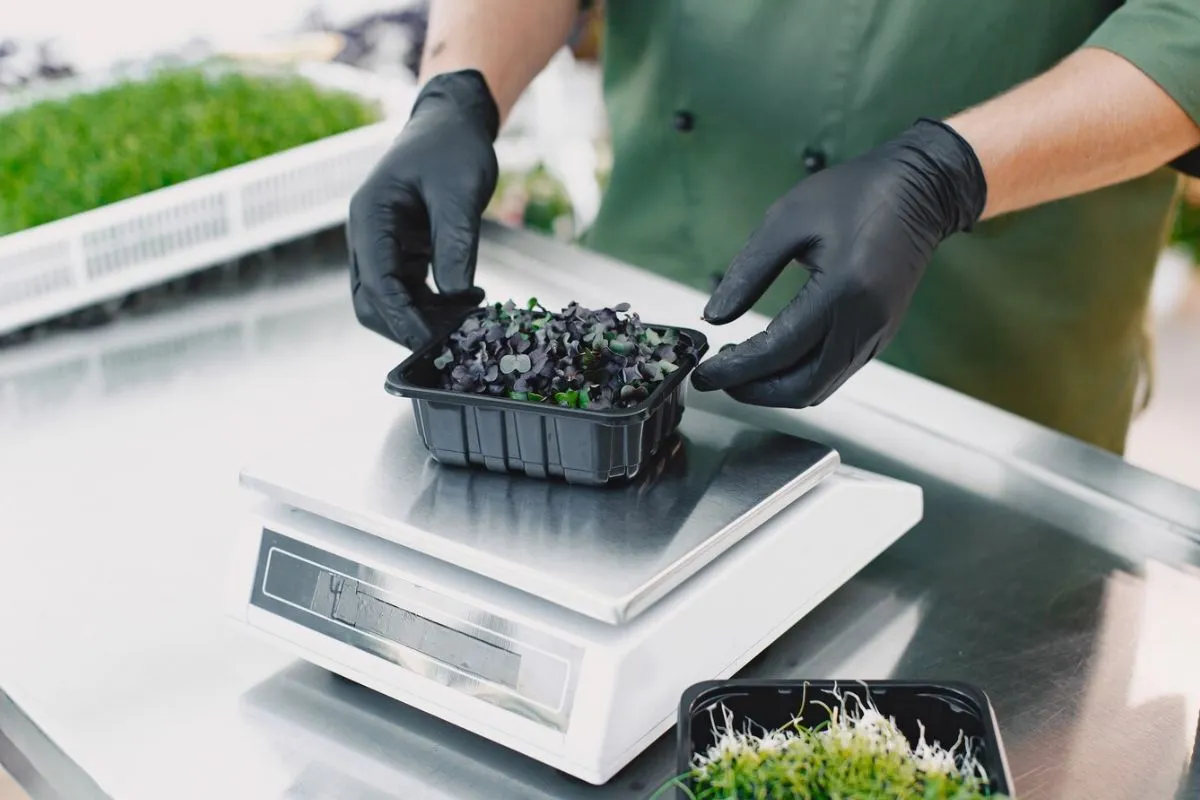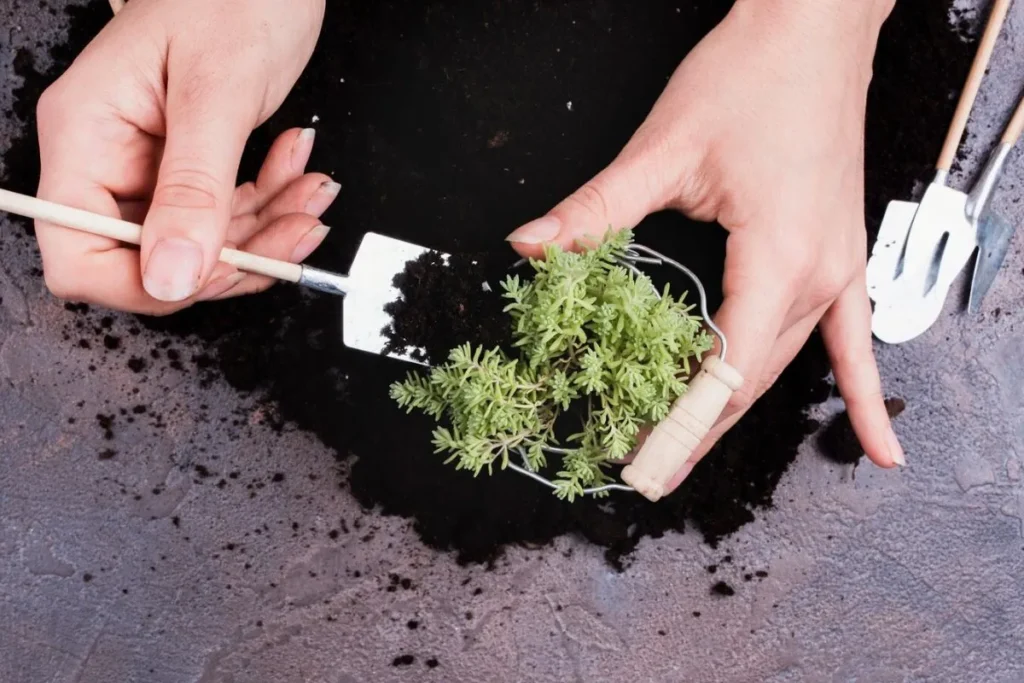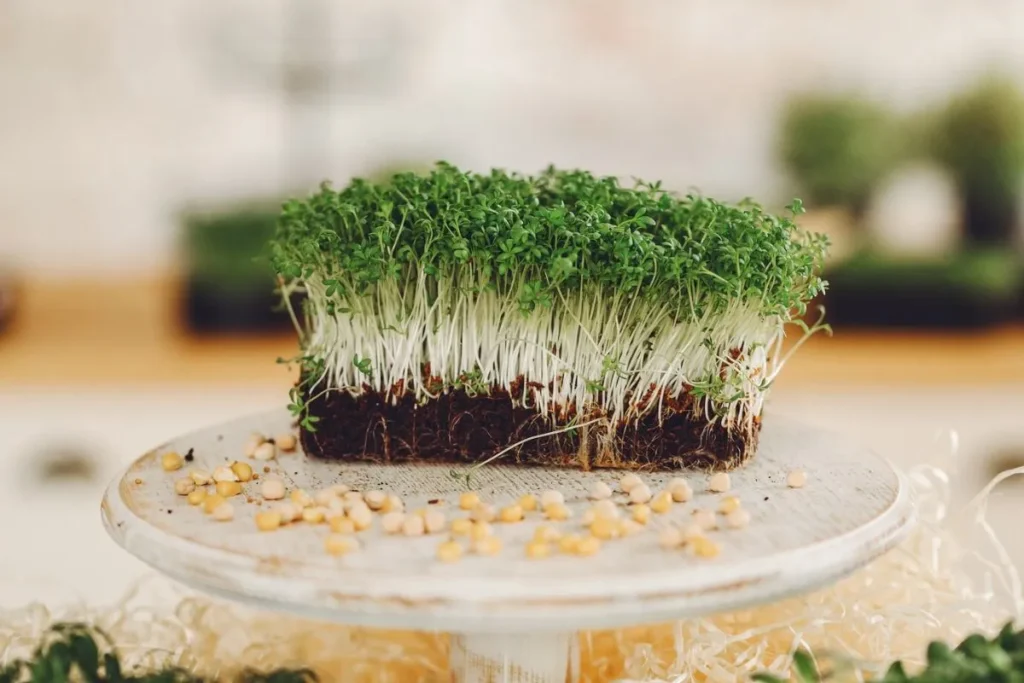Creating Self-Watering Systems for Microgreens has become an innovative solution for sustainable and efficient cultivation. The growing interest in microgreens, which are rich in nutrients, necessitates advancements in irrigation methods.
In this article, we delve into various approaches to the creation of these systems. These methods enhance the growth of microgreens by providing consistent hydration.
Additionally, we discuss the applications of these systems. These systems can be implemented both in domestic and commercial farming.
The Importance of Microgreens
Microgreens are young vegetables that are harvested just after the first leaves have developed. They are known for their intense flavors and nutritional benefits.
These tiny plants are often richer in vitamins and minerals compared to their mature counterparts. They require precise growing conditions, making adequate irrigation crucial.
This is where Creating Self-Watering Systems for Microgreens makes a significant difference. These systems ensure that microgreens receive optimal water levels.
Benefits of Self-Watering Systems
Self-watering systems offer numerous advantages for microgreens cultivation. They eliminate the guesswork in irrigation, providing consistent hydration to the plants.
Moreover, they minimize water wastage, which is essential for sustainability. Efficient water usage in agriculture helps conserve resources and reduce ecological footprints.
By automating the watering process, growers can focus on other aspects of cultivation. This ultimately leads to healthier and more productive plants.
Advantages for Home Growers
Home growers benefit significantly from self-watering systems. These systems simplify the cultivation process, making it accessible to those with limited gardening experience.
Furthermore, they save time and effort. There is no need for daily manual watering, which is especially useful for busy individuals.
Home growers can enjoy fresh, nutrient-dense microgreens year-round. This contributes to a healthy diet and greater self-sufficiency.
Methods of Creating Self-Watering Systems for Microgreens
Several methods exist for Creating Self-Watering Systems for Microgreens. These methods range from simple DIY solutions to advanced commercial systems.
Below are detailed explanations of some common techniques.
Wicking Systems
Wicking systems utilize a wick to draw water from a reservoir to the plant roots. This method is cost-effective and easy to set up.
Typically, a container with a water reservoir is placed beneath the growing tray. A wick, made of absorbent material, connects the two.
The wick continuously supplies water as needed. This maintains moisture levels within the substrate.
Setting Up a Wicking System
To create a wicking system, you will need the following materials:
- A growing tray with drainage holes
- A water reservoir container
- Absorbent wick material (cotton or nylon)
- Growing medium (soil or coco coir)
- Microgreen seeds
The setup steps are simple:
- Place the growing medium and seeds in the tray.
- Insert the wicks through the drainage holes.
- Position the tray over the reservoir.
- Fill the reservoir with water.
This system gradually waters your microgreens over time.
Capillary Matting
Capillary matting involves the use of a water-absorbent mat. The mat provides consistent moisture to the plants’ roots.
This method is widely used in greenhouse environments. It is effective for growing various types of plants, including microgreens.
How Capillary Matting Works
The mat is placed under the growing trays. When the mat is saturated, it supplies water through capillary action.
This ensures that the growing medium remains moist. It simplifies the watering process and prevents over-watering.
Automated Drip Irrigation
Automated drip irrigation is a more advanced method. It delivers precise amounts of water directly to the plant roots.
This method is controlled by timers and sensors. It is ideal for larger-scale commercial microgreen production.
Components of Drip Irrigation Systems
Key components include:
- Drip lines or tubes
- Emitters or drippers
- Water reservoir
- Timer and sensor system
This setup ensures efficient water usage. It allows for automated, consistent watering tailored to the plant’s needs.
Applications in Different Cultivation Settings
Creating Self-Watering Systems for Microgreens is beneficial in diverse cultivation settings. These range from home gardening to commercial farming.
Home Gardening
For home gardeners, self-watering systems provide an easy way to grow microgreens. These systems can be set up in small spaces, such as windowsills or balconies.
They also reduce the frequency of manual watering. This makes it easier to maintain consistent growth conditions.
Home growers can enjoy fresh microgreens without the daily hassle of watering. Systems like wicking or capillary mats are perfect for these settings.
Commercial Microgreen Production
In commercial settings, the scalability of self-watering systems is crucial. Larger systems, such as automated drip irrigation, enhance efficiency.
These systems can be integrated with advanced monitoring technology. This ensures optimal water distribution and resource management.
Commercial growers benefit from reduced labor costs and increased yield. The automation of these systems supports large-scale production without compromising quality.
Urban Farming
Urban farming is an emerging trend. Self-watering systems are particularly useful in urban environments, where space and water may be limited.
These systems support vertical farming and allow for dense planting. Urban farmers can use these methods to produce microgreens efficiently.
Moreover, these systems promote sustainability in urban settings. They contribute to local food production and reduce dependency on distant supply chains.
Challenges and Considerations
Despite the benefits, Creating Self-Watering Systems for Microgreens poses certain challenges. Careful consideration is required to ensure successful implementation.
Initial Costs
The initial setup cost can be a barrier. Advanced systems, like automated drip irrigation, may require significant investment.
However, this cost is often offset by the long-term benefits. Over time, reduced water usage and increased yields can provide a return on investment.
Maintenance Requirements
Regular maintenance is essential. All systems need periodic checks to ensure proper functioning.
Wicking systems, for example, may require wick replacement. Automated systems need inspection of timers, sensors, and emitters.
This maintenance ensures that the systems operate efficiently and continue to benefit the plants.
Choosing the Right System
Choosing the appropriate system depends on several factors. These include the scale of cultivation, budget, and specific needs of the microgreens.
Home gardeners may opt for simpler, cost-effective solutions. Commercial growers might prefer advanced systems with high efficiency.
Assessing these factors helps in selecting the best system for individual requirements.
In Summary
Creating Self-Watering Systems for Microgreens supports efficient and sustainable cultivation. These systems are essential for providing consistent hydration, crucial for the growth of nutrient-dense microgreens.
Various methods, from wicking systems to automated drip irrigation, cater to different settings. Home gardeners and commercial growers alike can benefit from these technologies.
Despite initial costs and maintenance, the long-term advantages ensure high yields and resource efficiency. Embracing these systems can revolutionize how we grow microgreens.
As our focus shifts towards sustainable farming, exploring and implementing innovative irrigation systems becomes even more important. These solutions not only enhance productivity but also contribute to a healthier environment.
If you’re keen on sustainable agriculture, consider investing in a self-watering system for your microgreens. It’s a step towards eco-friendly and efficient farming practices.
Frequently Asked Questions
How often do self-watering systems need maintenance?
It varies by system. Wicking systems may need wick replacement monthly, while automated systems require regular equipment checks.
Can I use a self-watering system for other plants?
Yes, many systems are versatile and can be used for various types of plants and vegetables.
Is it expensive to set up a self-watering system?
Initial costs can be high, especially for advanced systems. However, long-term savings on water and labor often justify the investment.
Are self-watering systems environmentally friendly?
Yes, they promote water conservation and reduce the ecological footprint of plant cultivation. They align well with sustainable farming practices.
How do I choose the right self-watering system?
Consider your scale of cultivation, budget, and specific plant needs. Simple systems suit small gardens, while advanced setups benefit commercial farms.



